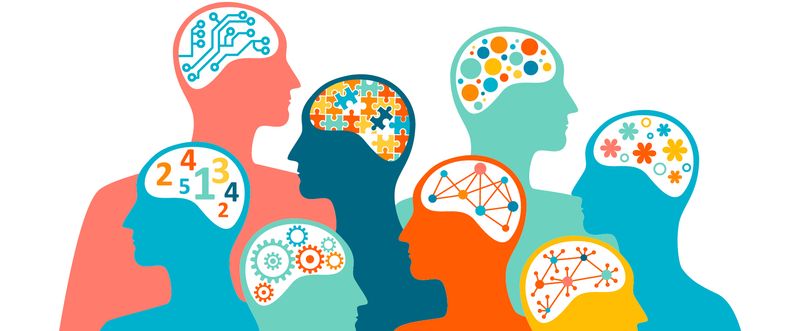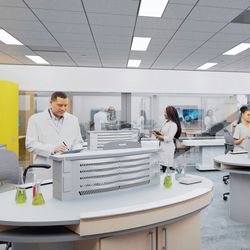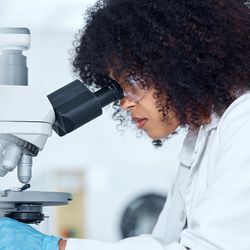Embracing the Neurodiverse Lab
A primer to empower lab managers to understand, encourage, and maximize the strengths of neurodiverse team members
There has been a recent, strong movement to promote inclusivity and raise awareness of the lack of accessibility for people with disabilities in science, particularly those who identify as neurodivergent. The Twitter hashtag #neurodivergentinSTEM is an example of grassroots efforts on social media to amplify the voices of underrepresented scientists.
This movement aims to address a significant obstacle to inclusive lab environments—a lack of awareness about what disability means. Here, we examine the state of accessibility and inclusivity in lab environments and highlight ways that lab managers can empower team members who identify as neurodivergent.
Defining “disability”
Disability is currently defined through three main models: the medical, scientific, and social models of disability. In both the medical and scientific models, disability is seen as an impairment, or “deviation from the norm,” according to Karsten Exner in an essay for Science.
In these models, people living with disabilities represent a minority of the population. But mathematically speaking, minority simply implies less than 50 percent; the 27 percent of people experiencing disabilities in the US is a significant portion of the population.
The majority of those living with disabilities experience an invisible disability, including chronic pain and mental health conditions, or neurodivergent experiences such as ADHD, which is present in about five percent of the US population.
Yet, in a report by the National Science Foundation, only nine percent of scientists noted living with a disability and less than 1.5 percent of principal investigators applying to research grants and/or awards self-reported living with a disability in the US, according to NIH data.
What does it mean to be neurodivergent?
Scientists with invisible disabilities may often feel like they are not deserving of help and/or are expected to perform according to an ableist concept of “productivity,” as outlined by University of British Columbia researchers in their 2021 Canada Research Chair Equitable Research Productivity Assessments report.
In the 1970s and ‘80s, the social model of disability was proposed. In this model, explained Zoë Ayres, PhD, head of laboratory facilities at the Open University in England, and mental health advocate, disabled people are not less likely to succeed because of their physical or mental attributes, but rather because current societal structures have barriers that prevent their success.
In this model, people living with disabilities are a normal occurrence in the population, which is what Judy Singer, an Australian sociologist, aimed to highlight when she coined the concept of neurodiversity in her undergrad thesis work in 1998. According to Singer, neurodiversity encompasses all the different ways humans experience cognition—the way information is processed, communicated, and more.
About 15 to 20 percent of people are neurodivergent, and include those who live with what are medically defined as learning and/or mental health disorders, and often as invisible disabilities, such as dyslexia, dyscalculia, attention deficit/hyperactivity disorder (ADHD), autism, and Tourette syndrome.
“Having ADHD in a lab environment also has its positives. If I’m enthusiastic about a particular research topic, I can read around a topic for hours,” said Ayres, adding that her neurodivergent way of thinking has also made her adept at big picture thinking, often being involved in planning many projects and activities.
Studies have also shown that pattern recognition, memory, and math skills often coexist within people who are autistic. In 2022, The Guardian reported that the intelligence agency Government Communications Headquarters in the UK was actively recruiting ADHD and autistic women, and even cited their director of strategy as saying, “Neurodiversity is key to keeping Britain safe.”
What are common hurdles that neurodivergent people experience in the workplace?
Ayres explained that due to her ADHD and depression, her “productivity comes in waves,” experiencing periods of intense or poor focus. She also experienced short-term memory issues that impacted her ability to retain information during her PhD. “Comparing myself with others made me feel like I wasn’t a good researcher, and the competitiveness of academia only exacerbated this further,” added Ayres.
Those diagnosed as autistic and/or having ADHD must also contend with overstimulation from sensory stimuli including bright, loud, and crowded environments, and issues with auditory processing. “Like many autistic people, I can also struggle to process auditory information. I can hear the words, but I just cannot make sense of them. This makes it difficult for me to follow talks, especially since captions are rarely available,” wrote University of Pittsburgh School of Pharmacy assistant professor Simone Brixius-Anderko, PhD, in an eLife magazine feature article, when commenting about attending conferences.
How can lab managers enable accessible and inclusive spaces for neurodivergent scientists?
According to Ayres, there are three important aspects to supporting all scientists in laboratory environments in academia and industry.
1. Understand and adopt the social model of disability
Adopting and understanding the social model of disability “is important in lab spaces because it involves us thinking about our structures and support systems and making sure they are fit for purpose to enable disabled scientists to thrive,” said Ayres.
This may include re-examining:
- current performance indicators that focus on research output in publications, positive results, or revenue generated, to include other metrics such as knowledge dissemination, mentoring, and collaboration capacity that lead to scientific and societal progress.
- work hours to allow more flexible working conditions, and/or more breaks.
2. Ensure "nothing about us without us.”
Ayres emphasized that we must hear from scientists with disabilities and neurodiversity as they discuss their challenges and communicate their needs to effectively influence accessibility policy and create fit-for-purpose accommodations. But it can also include conducting anonymous surveys on how to best support those who identify as being neurodivergent or experiencing a disability, and then providing accommodations or modifying the work involved. Accommodations or work modifications can look like:
- low pressure pipettes for those living with chronic pain conditions,
- physical redesigns such as height-adjustable laboratory benches for mobility device users,
- use of accessible tools such as speech-to-text programs for manuals and other important material like safety data sheets,
- changing light fixtures to avoid overstimulation and/or migraines
- minimizing noise in the lab, or allowing for the use of earbuds.
3. Recognize and celebrate the contributions of people with disabilities in science
Celebrating and informing team members about the work of marginalized groups in science can be a catalyst for people with disabilities to feel accepted, welcomed, and empowered to perform laboratory work. A great way to start would be holding space during lab meetings to go over the work of scientists with disabilities, as amplified by social media accounts like Disabled in Science, or to discuss accessibility, as suggested during the aforementioned ACS webinar.
Understanding that progress is a long-term effort cemented one action at a time is vital to ensuring more accessible laboratory spaces. “It's only by including everyone that we can fully embrace and tackle the challenges facing society as a whole, where science promises some of the answers,” concludes Ayres.


